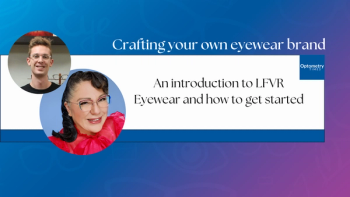
Study documents efficacy, safety of insert
Results from a large, multicenter investigation demonstrate high patient acceptability for the hydroxypropyl cellulose ophthalmic insert used in the management of dry eye disease.
Bowling Green, OH-Results from a large, multicenter investigation demonstrate high patient acceptability for the hydroxypropyl cellulose ophthalmic insert (Lacrisert, Aton Pharma) used in the management of dry eye disease.
The safety, tolerability, efficacy, and compliance with the once-daily, preservative-free insert were investigated in a registry that included 520 patients with moderate-to-severe dry eye enrolled at 49 clinical sites across the United States. Patients and their eye-care providers completed multiple assessments to rate dry eye signs, symptoms, and quality of life impact at baseline and after 1 month of treatment.
A valuable addition
"The findings from this study provide further confirmation," Dr. Brujic continued, "that [the ophthalmic insert] is a valuable tool in our armamentarium for managing moderate-to-severe dry eye disease. Its use is associated with many success stories among my patients. There is a subsection of the dry eye population who depend on frequent instillation of artificial tears. We need to be more proactive in offering this technology for those patients who are dependent on artificial tear use greater than q.i.d."
At the baseline visit in the registry study, patients underwent a standard dry eye clinical evaluation and completed the Ocular Surface Disease Index (OSDI) and additional questionnaires to rate the severity and quality of life impact of their symptoms, along with the nature of the relief obtained with artificial tears.
After receiving instruction on product use, patients placed the insert into the inferior cul-de-sac of both eyes prior to leaving the office. Follow-up by telephone contact was completed 3 days later to elicit adverse events and confirm appropriate insertion.
Patients returned to the office after approximately 1 month, and the same assessments were repeated.
Newsletter
Want more insights like this? Subscribe to Optometry Times and get clinical pearls and practice tips delivered straight to your inbox.


















































.png)


